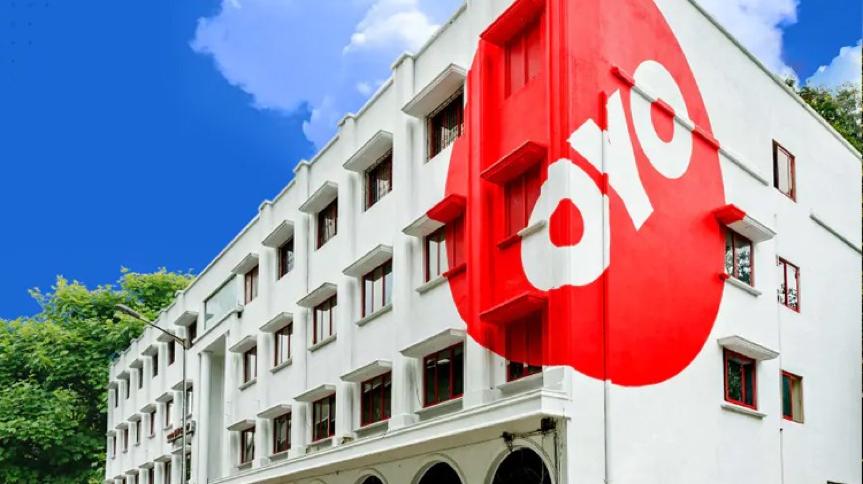
Positive Comments: A Model of Precise Penetration into the Low – tier Market and Global Capital Operation
OYO’s rise can be regarded as a “textbook of counter – attack” in the field of innovation and entrepreneurship. The core of its success lies in the precise insight into the needs of the low – tier market, the efficient ability of large – scale expansion, and the mature capital operation strategy. These elements together have constructed its growth path from a “budget hotel” to a “global hotel giant”.
First of all, OYO seized the gap in the low – tier market that was neglected by the traditional hotel industry. As mentioned in the news, OYO’s core customer group consists of travelers with limited budgets. The prices of its hotels generally stay around 50 yuan per night, covering the peripheral areas of big cities and small counties. This market positioning may seem “low – end”, but in fact, it fills a huge demand gap. Globally, especially in developing countries, a large number of consumers have a rigid demand for standardized and affordable accommodation services. Traditional hotel brands (such as chain economy hotels) often focus on the mid – to high – end market, while homestays and individual small hotels are difficult to meet the needs due to non – standard services and poor hygiene conditions. Through the “unified renovation + standardized service” model, OYO integrated scattered individual hotels into a chain brand, which not only reduced the consumers’ choice cost but also improved the check – in experience. Data shows that the occupancy rate of OYO hotels reached as high as 90% in the first month of operation, which is a direct manifestation of the precise satisfaction of market demand.
Secondly, OYO’s global expansion strategy demonstrated strong execution ability. Starting from its home market in India, OYO quickly replicated its model in markets such as China, Southeast Asia, Europe, and the United States. In 2019, it had over ten thousand employees in China, and the 100 – million – dollar investment from Didi are all evidences of its cross – regional penetration ability. This expansion logic of “encircling the cities from the countryside” (covering the low – tier market first and then extending to core cities) not only avoids direct competition with international hotel giants but also reduces the operating cost per store through the economies of scale. More notably, OYO did not limit itself to a single business during the expansion. Instead, it quickly made up for the short – comings in high – end brands and regional markets through acquisitions (such as the acquisition of the Dutch Leisure Group and the US Motel 6), laying a foundation for subsequent brand upgrading.
Finally, OYO’s capital operation ability provided crucial support for its long – term development. From obtaining the Peter Thiel Fellowship and investment from the SoftBank Vision Fund in the early stage to improving its financial health through debt repurchase (cutting 16% of expenses in 2024) and turning a profit (recording its first full – fiscal – year profit in 2023 and a net profit of 500 million yuan in 2024) in the later stage, OYO demonstrated a profound understanding of the capital cycle. Especially under the impact of the pandemic in 2020, OYO “survived” through flexible means such as accepting a small – scale investment from Microsoft and completing Series F financing at a reduced valuation. Eventually, it seized the IPO window during the industry recovery period and pushed its valuation up to 8 billion US dollars (about 57.2 billion yuan). This capital management ability of “adjusting strategies in adversity and accelerating expansion in prosperity” was the key turning point for its transformation from “burning money for expansion” to “sustainable profitability”.
Negative Comments: Challenges to the Sustainability of the Low – price Model and Multiple Hurdles in Brand Upgrading
Although OYO’s growth trajectory is remarkable, the risks and transformation challenges hidden in its business model cannot be ignored. From industry competition to brand image, from acquisition integration to market fluctuations, OYO still needs to overcome multiple obstacles in the future.
First of all, the “predatory pricing” of the low – price model may trigger a vicious cycle in the industry. As mentioned in the news, OYO was criticized by its peers as a “negative example of low – price competition” for its pricing of “50 yuan per night”, and it even faced a lawsuit from the Indian regulatory authorities. This price – centered competition strategy, although capable of quickly seizing the market, may compress the profit margin of the industry in the long run, forcing competitors to follow suit and cut prices, which will ultimately damage the health of the entire market. More importantly, the low – price model has extremely high requirements for cost control. OYO needs to spread the renovation and operation costs through large – scale expansion. However, if the expansion speed slows down or the occupancy rate drops (such as a decrease in demand due to an economic downturn), the profitability of individual stores will face direct pressure. For example, OYO suffered a net loss of 10.6 billion yuan during the pandemic in 2020, which was the result of the double impact of a sudden drop in demand and high fixed costs.
Secondly, the brand label of a “budget hotel” has become the biggest obstacle to high – end transformation. OYO’s founder, Agarwal, tried to get rid of the “budget” image through acquisitions (such as Motel 6) and the launch of the high – end brand SUNDAY (planning to cover 30 countries and 100 stores by 2026). However, changing brand perception is far more difficult than expected. Consumers’ inherent impression of OYO (such as stained pillows and faulty electrical sockets) has become deeply rooted through short – video content (such as the “20 – yuan hotel” series on Kuaishou). This “down – to – earth” label, although able to attract customers in the low – tier market, is difficult to support the premium of a high – end brand. For example, Motel 6, which OYO acquired, is itself an economy hotel brand in the United States. If it cannot differentiate itself from the parent brand in terms of service, design, etc., OYO’s high – end transformation attempt may end up being a superficial change.
Thirdly, the integration risks brought about by aggressive acquisitions cannot be underestimated. OYO’s acquisition moves in recent years can be described as “a snake swallowing an elephant”. In 2019, it acquired the Dutch Leisure Group for 415 million US dollars, and in 2024, it acquired Motel 6 from Blackstone for 525 million US dollars. These transaction amounts far exceeded its profit level during the same period (with a net profit of only 500 million yuan in 2024). Cross – regional and cross – brand acquisitions require strong management and integration capabilities. OYO’s previous experience was mainly concentrated in the low – tier market, and it lacked experience in the operation of high – end hotels (such as customer service and brand marketing). If it fails to effectively integrate the acquired assets, it may lead to a waste of resources, unmet synergy expectations, and even drag down the overall performance.
Finally, the volatility of the global tourism industry remains a potential threat. OYO’s business highly depends on travel demand, and the tourism industry is significantly affected by economic cycles, public health events (such as the pandemic), and geopolitics. Although OYO achieved profitability after 2023, the uncertainty of the global economic recovery (such as inflation pressure and fluctuations in consumer confidence) may once again impact its core market. For example, if the economic growth rate of emerging markets (such as India and Southeast Asia) slows down, the demand for budget accommodation may shrink. Since OYO still has a relatively high revenue share in these regions (80% of its performance in 2024 came from outside India, but the specific regional distribution was not clear), it is necessary to be vigilant about the chain reaction of market fluctuations.
Advice for Entrepreneurs: Practical Insights Extracted from OYO’s Success and Dilemma
OYO’s case provides entrepreneurs with multi – dimensional experiences and warnings. Combining its growth path and potential risks, the following suggestions are worth considering:
Precisely Position the Niche Market and Build a Moat with “Differentiation”
OYO’s success started with its insight into the needs of the low – tier market – the “low – price standardized accommodation” neglected by traditional hotels. Entrepreneurs should avoid blindly chasing popular tracks and focus on niche needs that have not been met (such as specific groups, regions, or scenarios). They should build a competitive barrier through a differentiated model (such as OYO’s “integration of individual hotels + standardized service”). The key is to verify the authenticity of the demand (such as OYO’s 90% occupancy rate in the first month) to avoid the trap of “pseudo – demand”.Balance the Expansion Speed and Profit Quality and Be Wary of “Sacrificing Profits for Scale”
OYO quickly occupied the market through aggressive expansion in the early stage, but the huge losses in 2020 also exposed the risks of “emphasizing scale over profit”. Entrepreneurs need to establish a “replicable single – store profit model”. Before expansion, they should ensure that a single store (or a single business unit) has stable profitability, and then amplify the revenue through large – scale expansion. At the same time, they need to reserve sufficient cash flow to cope with external shocks (such as the pandemic) to avoid being forced to “sell equity at a low price” due to a broken capital chain.Brand Upgrading Requires “Breaking Before Building” and Avoiding “Label Kidnapping”
OYO’s high – end transformation dilemma stems from the solidification of its “low – end” brand perception. If entrepreneurs plan to transform from the low – tier market to the mid – to high – end market, they need to plan a brand differentiation strategy in advance: First, launch an independent sub – brand (such as OYO’s SUNDAY) to form a clear positioning difference from the parent brand; second, reshape users’ perception through service, design, marketing, etc. (such as emphasizing the “quality” rather than the “cost – effectiveness” of the high – end brand); third, gradually reduce the association between the parent brand and the low – end image (for example, OYO can dilute the single label of “50 yuan per night” by improving the service standards of some stores).Capital Operation Should Be “Centered on Oneself” and Avoid Being “Led by Capital”
OYO’s capital path (from a huge investment from SoftBank to financing at a reduced valuation) reminds entrepreneurs that capital is a tool, not a goal. When raising funds, entrepreneurs need to clarify the use of funds (such as OYO’s early – stage financing for expansion and later – stage financing for debt repurchase) and avoid blindly burning money to “boost the valuation”. At the same time, they need to maintain control of the company (OYO’s founder, Agarwal, obtained early – stage support through the Peter Thiel Fellowship and did not dilute too much equity due to financing) to ensure the independence of strategic decision – making.Acquisition Integration Requires “Capability Matching” and Be Wary of “Expanding for the Sake of Expansion”
Although OYO’s acquisition strategy (such as Motel 6) has facilitated its globalization, the integration risks are extremely high. When making acquisitions, entrepreneurs need to evaluate the synergy between their management capabilities and the acquired assets. If the acquisition target is highly relevant to the existing business (such as OYO’s acquisition of the big – data company Danamica to improve its pricing ability), it can quickly generate synergistic effects. If it is a cross – field or cross – regional acquisition (such as a high – end hotel), entrepreneurs need to reserve the corresponding team and experience in advance to avoid “indigestion”.
In summary, OYO’s story is a combination of “counter – attack in the low – tier market” and “wisdom in capital operation”. However, the challenges it faces also warn entrepreneurs that the success of a business model needs to balance short – term expansion and long – term sustainability, brand upgrading needs to break through the inherent perception, and the use of capital tools requires strategic sobriety. For entrepreneurs, OYO’s experience is not only about “how to succeed” but also the key inspiration for “how to continue to succeed after success”.
- Startup Commentary”Building LLMs: The Knowledge Graph Foundation Every AI Project Needs”
- Startup Commentary”The 17th Year of Tmall Double 11 and the New Map Rewritten by AI”
- Startup Commentary”How to Prepare Your Data for Artificial Intelligence”
- Startup Commentary”Small and Medium-sized Banks: “Cutting the Tail” in Loan Assistance”
- Startup Commentary”The Six AI Giants on Stage: AGI Is No Longer a “Future” Thing”





